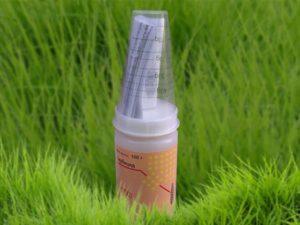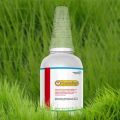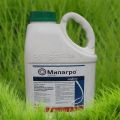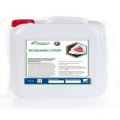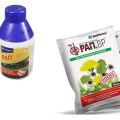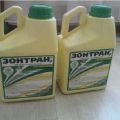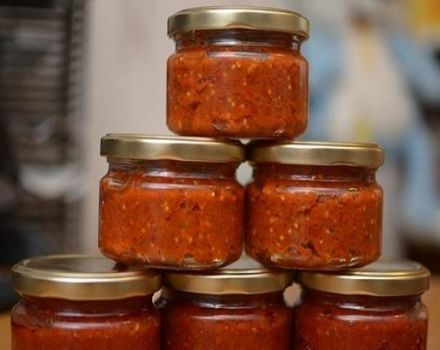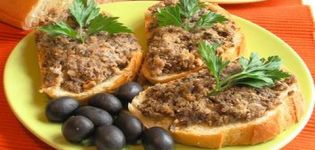Instructions for the use of the herbicide Quickstep, consumption rates and analogues
A systemic herbicide, consisting of several components, is used to control weedy cereal annuals and perennials in areas occupied by leafy cultivated species. High efficiency of the herbicide Quickstep on potato, rapeseed, beet plantations. The drug acts quickly, has a depressing effect on the green and underground part of weeds.
Content
- 1 Active ingredients of the drug Quickstep
- 2 Weed control formulation
- 3 Prescription of herbicide
- 4 Principle and speed of action
- 5 Impact speed and symptoms
- 6 Protective period
- 7 Advantages and disadvantages of the drug
- 8 Consumption rate
- 9 Preparation and use of working solution
- 10 Safety engineering
- 11 Toxicity degree
- 12 First aid for poisoning
- 13 Is it compatible with other products?
- 14 Storage conditions and rules
- 15 Herbicide analogs
Active ingredients of the drug Quickstep
The Quickstep herbicide is based on two active components:
- cletodim (included in the category of cyclohexanedionoximes) - 130 g / l;
- haloxyfop-P-methyl (aryloxyphenoxypropionic acid compound) - 80 g / l.
Both compounds have a systemic herbicidal effect.
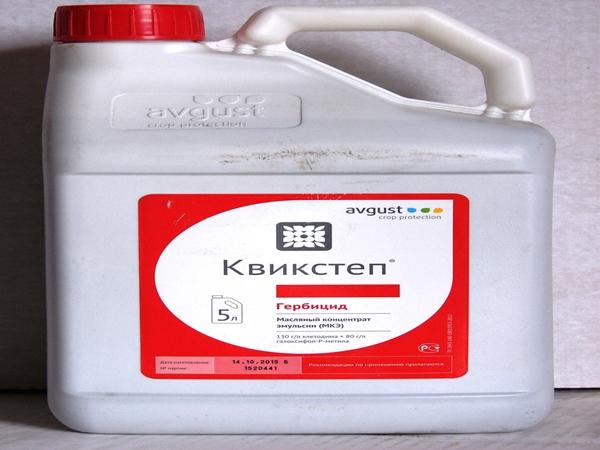
Weed control formulation
Quickstep, produced by the Russian company August, is a concentrated oil emulsion related to selective herbicide formulations. It is sold in 5 liter cans.
Prescription of herbicide
The herbicide Quickstep is intended for the destruction of weedy cereals of annuals and perennials in areas where broad-leaved species of cultivated plants grow.
The drug is effective against:
- broomsticks;
- wheatgrass;
- wild millet;
- bluegrass;
- bristle;
- wild oat;
- crabby;
- foxtail.
The herbicide Quickstep does not have a toxic effect on cultivated dicotyledonous plants; its effect extends only to cereal annuals.

Principle and speed of action
Quickstep is characterized by selective action. Active components, penetrating into plant tissues through the surface of leaves and stems, inhibit acetyl-CoA carboxylase, which inhibits the synthesis of fatty acids. Haloxyfop-P-methyl in plant tissues, after being hydrolyzed, turns into haloxyfop-P, which suppresses the development of the meristem. And the cellhodim passes from the leaves to the root system, there it negatively affects the growth points.
These processes are fast. 2-3 days after treatment, symptoms of weed suppression are noticeable. Herbicide resistance does not develop.
Impact speed and symptoms
The rate of death of unwanted vegetation depends on the specific type of weed, the stage of its formation, and the weather. But usually the death of plants occurs a week or two after treatment.
There is a gradual dying of the weed:
- at the first stage, the plant stops developing, chlorosis develops, necrotic changes are noticeable on the leaf plates, the veins turn red;
- at the second stage, the leaves turn brown, wither, dry out.

Protective period
The herbicide Quickstep penetrates into plant tissues through the surface of aboveground organs, is not a soil chemical, therefore its effectiveness extends to herbs present in the cultivated area during the pickling period. The herbicide does not have a depressing effect on the weeds that emerged in the second wave of the season.
If you choose the right time for spraying, then the effect of the Quickstep drug remains for the entire growing season.
Advantages and disadvantages of the drug
The popularity of the Quickstep herbicide is due to its many advantages. A drug:
- combines two herbicidal components affecting the aboveground and underground parts of the plant;
- effective against all common cereal annuals and perennials;
- acts quickly;
- applied at any stage of development of cultivated plants;
- economically spent;
- compatible with many chemicals used against dicotyledonous weeds.

Consumption rate
The consumption of the herbicide and the period of treatment are determined by the type of weed growing on the cultivated area and the stage of its formation.
| culture | consumption rate, l / ha | optimal processing time |
| beets, rapeseed, soy | 0.4 (annual weeds) | in the stage of 2-4 leaves |
| 0.8 (perennial) | when weeds reach a height of 10-12 cm | |
| linen | 0.4 (annual) | in the stage of 2-4 leaves |
| 0.8 (perennial) | when weeds reach a height of 10-12 cm | |
| potatoes, sunflower | 0.4 (annuals) | at the stage of 4-6 leaves |
| 0.8 (perennials) | when weeds reach a height of 15-20 cm |
The stage of development of cultivated vegetation is not important for determining the processing time. The exception is flax, the processing of this culture is carried out at the stage of development "herringbone".
Preparation and use of working solution
Before depressurizing the canister, shake the herbicide thoroughly. The tank of the spraying device is filled with water to half of its volume, a measured amount of the drug is poured in. Stir thoroughly. Add water to the edge of the tank while continuously stirring with a mechanical stirrer.
The area is treated by spraying, for flax once a season, for other crops the waiting period is 60 days. The instructions for use indicate that the flow rate of the working fluid is 200-300 l / ha.
Spraying is applied to weeds that have a developed leaf mass to absorb the active components of the chemical. It should be handled carefully so that the solution does not get on the leaves of cultivated plants.

Safety engineering
The herbicide Quickstep has a moderate toxic effect on the human body, therefore it is necessary to work with it, taking into account standard precautions. You cannot start the procedure without protecting the skin, eyes and breathing. It is advisable to work in the morning or evening hours, with little or no wind.
Since Quickstep is not a soil chemical, there is no restriction on crop rotation after its application.
Toxicity degree
Hazard class of the herbicide for humans and insects 3rd - moderately toxic substance. In order not to harm the bees, the following rules must be observed:
- border zone from the apiary - at least 3 km;
- limitation of summer bees - at least 4 hours.
It is forbidden to use Quickstep in the sanitary zone of reservoirs belonging to fish farms.

First aid for poisoning
A person affected by the effects of Quickstep should be immediately assisted:
- if a toxic chemical is inhaled, remove the victim from the room, ask to breathe deeply;
- in case of accidental swallowing - thoroughly rinse the mouth with water, drink plenty of water, take activated charcoal (1 g of sorbing medication per 1 kg of human weight), induce vomiting, repeat the steps if necessary;
- in case of contact with the skin, wipe off the chemical with a cotton swab or cloth, but do not rub the skin, wash the body area with soapy water;
- in case of contact with clothes - remove and send to wash the contaminated wardrobe item, wash with water the area of the body with which the soiled clothes came into contact;
- in case of contact with eyes, open the eyelids with your fingers, rinse the eyeballs abundantly with warm water.
If the poisoning is severe, then you need to immediately call an ambulance, and before her arrival, remove the protective equipment and clothing from the victim.
Even if the intoxication is mild, it is advisable for the victim to go to a medical institution, where a specialist will prescribe symptomatic therapy.
Is it compatible with other products?
Quickstep is combined with a large list of herbicidal, insecticidal, fungicidal preparations. Cannot be combined with alkaline chemicals only, with a pH above 8.5. High compatibility of the herbicide with chemicals based on etofumezate, clopyralid, sulfonylurea, desmedipham, phenmedipham.
The next component is added after the previous one has completely dissolved.

Storage conditions and rules
Store the Quickstep herbicide in the hermetically sealed canister in which it was purchased. It is advisable to leave the drug in a warehouse or in another closed place. The storage temperature can range from -30 to +30 ° C.
Shelf life - 2 years, provided that the canister is tight.
Herbicide analogs
Of the analogs based on xethodime, it should be noted:
- Cletodim Plus;
- Legate;
- Censor;
- Graminion;
- Select;
- Centurion Profi;
- Elephant;
- Chopper;
- Rondo.
Herbicides based on haloxyfop-P-methyl:
- Galaktion;
- Zellek Super.
All of these drugs inhibit lipid synthesis in plant tissues, which leads to the death of weeds in a short time. They are effective against annual cereals and perennials growing in areas occupied by root crops, sunflowers, and potatoes.


